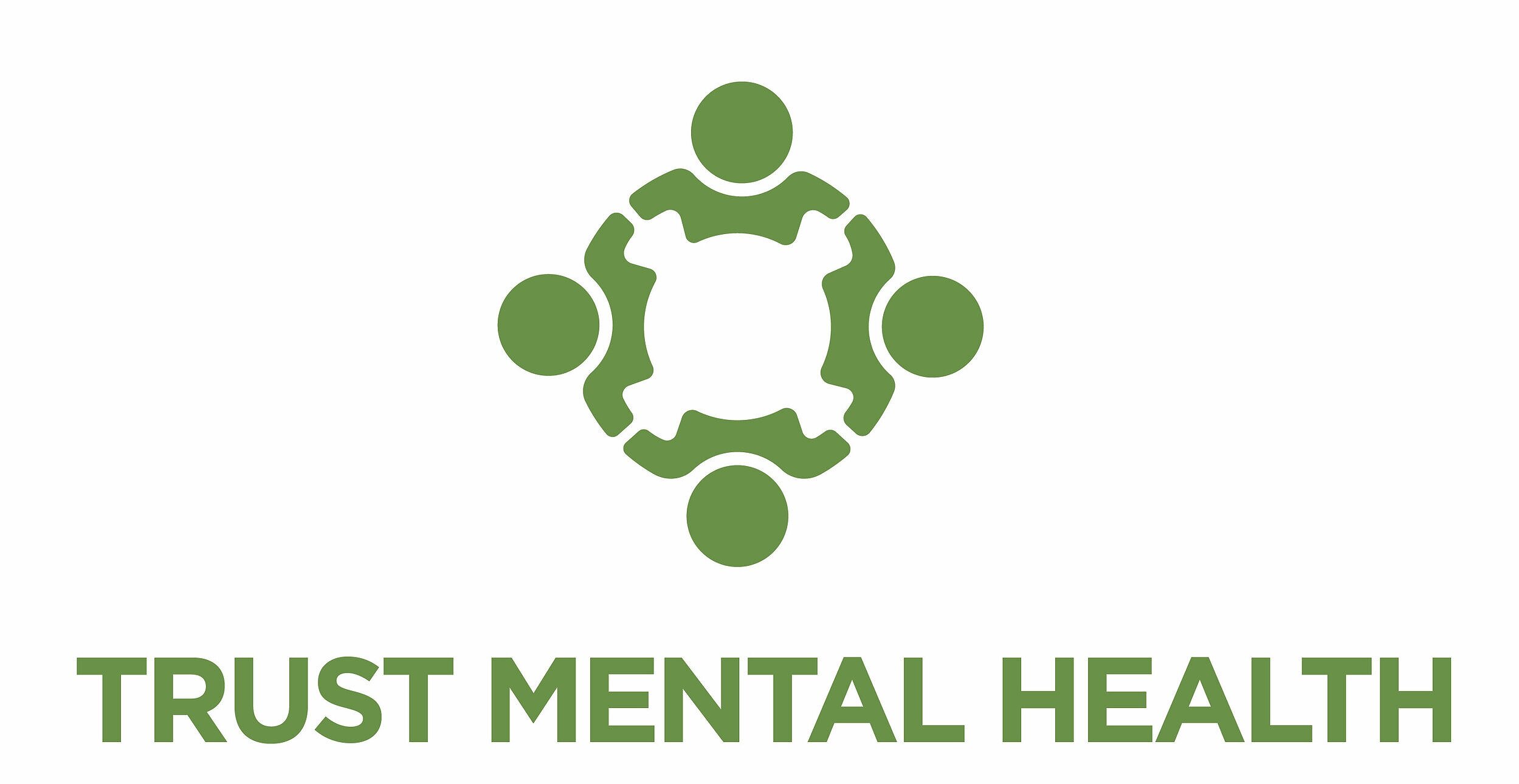Generalized Anxiety Disorder
Generalized Anxiety Disorder (GAD) is a condition that involves persistent worry and fear over a variety of things. This continuous sense of anxiety is felt even when there is no present or current reason. Trust Mental Health offers an anxiety assessment form to help our providers evaluate how acute your anxiety is. Read on to learn more.
Table of Content
Common Symptoms of General Anxiety
Symptoms of GAD persist on most days and last for 6 months or longer.
Common symptoms of GAD include:
Irritability
Fear
Anxiety
Worry
Fatigue
Feeling on edge
Inability to relax
Sleep problems
Nausea
Trembling
Need to urinate often
Shortness of breath
Headache
Muscle tension
Difficulty focusing
Sweating
Restlessness
Impact on Daily Life
GAD can have an adverse effect on your emotional well-being and thus on your quality of life. Its effects can ripple into your professional, academical, and personal life. The pervasive feelings of worry and dread can trap you in a cycle of anxious thoughts. This constant mental tension can be exhausting. It can also make it difficult to concentrate, make decisions, and fulfill your responsibilities. A persistent state of anxiety may make it difficult for you to connect with others, and can lead to isolation. Sleep disturbances can exacerbate the cycle of anxiety.
As you struggle to cope with the challenges posed by your anxiety, you may find a decrease in your self-esteem and self-worth. Due to the impact on your daily functioning, you may also feel less accomplished and content in different areas of your life.
Finally, GAD can also affect your physical health. The constant presence of anxiety can take its toll and trigger a stress response. This is a heightened physiological state of alert also known as fight-flight-freeze. This is a response that gets triggered in response to a short-term, perceived threat. However, in someone who has GAD, the stress response can become a chronic state. This chronic state can result in physical health problems.
Assessment
Trust Mental Health offers an anxiety assessment that helps gauge the severity of your anxiety Please note, this is a tool for information purposes only and will help our providers assess the severity of your anxiety. It is not a diagnosis. When you submit the form, a member of our team will reach out to you for further support.
Anxiety Assessment Tool
The form takes you through seven questions in order to provide a sense of how anxiety impacts your life. The form is short and quick, but if possible, take the time to consider each question so your answer is accurate. You will be asked to think back over the last two weeks when completing the anxiety assessment. It may help to have your calendar in front of you when doing the questionnaire in order to refresh your memory about your activities over the last two weeks.
Completing the Anxiety Assessment
For example, the first question is a general one about how often in the last two weeks you have felt nervous, anxious, or on edge. The answer options are not at all, several days, over half the days, or nearly every day.
If you have been completely free of worry and anxiety in this time period, your answer choice would be not at all.
If there have been some days in which you have felt this way, you may select several days.
If you have found yourself preoccupied with worries or negative outcomes for at least seven days or more, your answer may be over half the days.
If you feel that you are persistently feeling tense, anxious, or nervous, you may select nearly every day.
Frequency of Symptoms
When you are going through the form, think about the frequency with which you worry about different aspects of your life. These can include family, work, relationships, health, or finances. People who suffer from some degree of anxiety spend a considerable amount of energy fretting over possible future issues, negative outcomes, and worst-case scenarios. You may also ruminate, or overthink situations. For example, you may worry over what may or may not happen, or dwell on what-if scenarios.
The form also questions how often you experience irritability. For example, you may become more easily irritated or on edge in situations which have not previously bothered you.
Fear, apprehension, and a sense of dread can also be symptoms of anxiety. People with an anxiety disorder may feel a sense of impending doom. For example, you may worry that something bad may happen, even when there is no immediate threat.
Physical Symptoms
The form also asks you to consider how often you struggle to relax and how often you have felt restless. Think about any physical symptoms you have experienced that you may not have realized can be related to anxiety. For example, muscle tension, aches and pains, fatigue, fidgeting, or trembling/shaking.
Interference in Daily Life
The last question in our anxiety assessment requires you to think about the extent to which anxiety is impacting your daily life. It is measured in degrees of how difficult anxiety makes it to:
perform at work
perform at school
manage things at home
get along with others
Anxiety Therapy
Anxiety therapy can help alleviate the symptoms of GAD. It can also provide you with strategies to manage your anxiety. It will teach you to recognize your triggers, and how to cope with and overcome your reactions to them. Through anxiety therapy, you will identify negative thought patterns and learn how to challenge them and replace them with more realistic thoughts. With the guidance of your therapist, you will be able to get down to the root causes of your anxiety.
BIPOC Therapy
Sometimes our anxieties are either related to, triggered by, or stem from certain aspects of our cultural and ethnic background. Treatment from a therapist that understands how your culture and ethnicity fit in with your mental health is an added benefit. Therapy for Black, Indigenous, and People of Color, also known as BIPOC therapy, involves receiving therapeutic treatment from a therapist that understands intersectional wellness. This means that they approach your treatment with an understanding of how your background and culture interacts with your mental wellness.
Support that Supplements Therapy
Support Groups
If you have received a diagnosis of an anxiety disorder from a mental health professional, there are things you can do to support your anxiety therapy. There are a variety of support groups, both online and in person, that you can join. Being in the company of others who have similar experiences and struggles as you can give you a sense of belonging. It is also a great resource for strategies and tips on dealing with anxiety. A support group offers a space for you to share your own story and have conversations with people who can understand what you are going through.
Lifestyle Change
Do not underestimate the value of small shifts in your lifestyle. Incorporating small, easy changes and self-care practices can help you manage an anxiety disorder. Self-care practices that you can gradually implement include some form of exercise, better nutrition, relaxation techniques, listening to music, and better sleep. These do not have to be large-scale changes – small steps are easier to sustain. For example, you can try to go for a ten minute walk every day – while listening to music! You can commit to eating at least three servings of fruit a day. You can practice 2 minutes of deep breathing as part of your morning routine. Finally, you can aim to put away your screens and devices at least an hour before going to sleep.
If you or someone you know are struggling with anxiety, take our free anxiety assessment here. Trust Mental Health has a team of experienced, BIPOC therapists that offer various types of therapy including anxiety therapy in California. We also offer free 15 minute consultations. Contact us today.
Key Points
Below are the main topics covered in this article:
Generalized Anxiety Disorder (GAD): symptoms, its affect on well-being, assessment, and treatment.
A walk through our free anxiety assessment form.
Treatment and support for GAD
FAQs
-
Generalized Anxiety Disorder (GAD) is a mental health condition characterized by excessive and persistent worry about various aspects of life, such as work, relationships, and health. People with GAD often find it difficult to control their worrying and nervousness, and it can have a significant negative impact on daily functioning.
-
Assessment for GAD typically involves a combination of clinical interviews, self-report questionnaires, and observation of symptoms. Trained mental health professionals use standardized tools to evaluate the severity of symptoms and their impact on someone’s life.
-
Common symptoms of GAD include excessive worry, restlessness, muscle tension, fatigue, irritability, difficulty concentrating, and sleep disturbances. These symptoms often occur more days than not and persist for at least six months.
-
Try this anxiety assessment form. Once you have clicked ‘submit’, a member of the Trust Mental Health team will reach out to you for further support. Please remember, self-assessment is not a substitute for a professional evaluation. If you suspect you have an anxiety disorder, it is important to consult with a qualified mental health professional for a comprehensive assessment.



